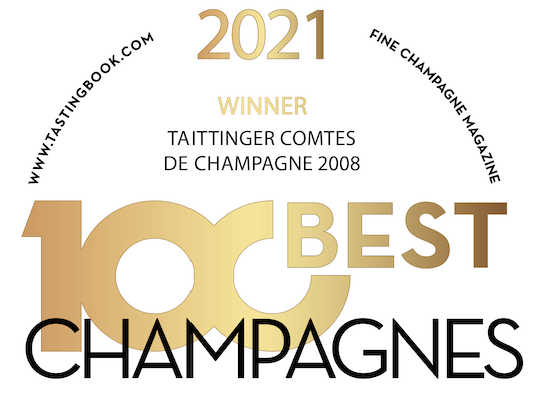The Tb points given to this wine are the world’s most valid and most up-to-date evaluation of the quality of the wine. Tastingbook points are formed by the Tastingbook algorithm which takes into account the wine ratings of the world's best-known professional wine critics, wine ratings by thousands of tastingbook’s professionals and users, the generally recognised vintage quality and reputation of the vineyard and winery. Wine needs at least five professional ratings to get the Tb score. Tastingbook.com is the world's largest wine information service which is an unbiased, non-commercial and free for everyone.
News
The world's only Champagne magazine and tastingbook.com select the World's Best Champagnes – The winner is Taittinger Comtes de Champagne 2008

For the tenth time, the world's one and only Champagne Magazine and world's largest wine information platform Tastingbook.com, put hundreds of champagnes in line and ranked the 100 best champagnes on global markets for 2021.
After days of blind-tasting hundreds of champagnes, the fin...
Wine Description
The Story
Taittinger Comtes de Champagne is the finest expression of the world famous wine from one of the greatest Champagne Houses. First produced in 1952, Comtes is made from 100% Chardonnay grapes from 5 Grand Cru sites in the Côte des Blancs. Showing a pristine pale yellow colour with very light, abundant bubbles which rise uniformly to form a fine mousse. The evocative bouquet opens with notes of pears and fresh cute white flowers. Left in the gla...
Vintage 2008
2008 -The Champagne vintage set to make history!
A first taste of leading winemakers’ 2008 champagnes reveals a miraculous vintage, bubbling with potential, which – whisper it – might just prove the greatest in living memory.
2008 was not, by any standards, a vintage year for the financial world. And for the greater part of it, 2008 was a pretty poor year for Champagne too: spring was freezing, summer gloomy and overcast. But then, aroun...
